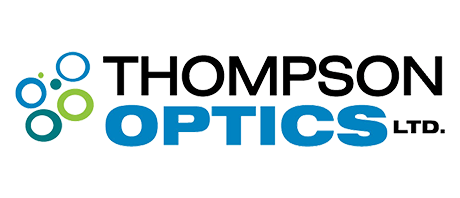Meet Our Experienced Optometrists and Opticians
Defining Myopia And Myopia Control
Myopia can be defined as a condition in which there is a mismatch in the eye’s optical components that results in a blurred distance image because the image is in focus in front on the retina. This mismatch most commonly results from the eye being too long axially. More simply put for patients, myopia, which is also referred to as nearsightedness, is an eye condition in which a patient can see nearby objects clearly, but distant objects appear blurry without the aid of glasses. This blur typically results from the eye being too long compared to the rest of its parts.
Myopia control can be defined as slowing the progression of myopia, a tactic that will hopefully result in a decrease in the treated patients’ overall adult refractive error.

COMMON MYOPIA CONTROL METHODS:
1. CORNEAL RESHAPING CONTACT LENSES (ORTHOKERATOLOGY):
Corneal reshaping likely slows myopia progression by bending light as it enters the reshaped eye. Corneal reshaping contact lenses reduce myopia progression by about 50%. A typical course of orthokeratology is an ongoing process to affect the reduction and stabilization of myopia. This will require a constant and precise series of visits and assessments. The average cost of lenses, visits, assessments, and follow-ups is $1500.00 for the first year and approximately $800.00 for subsequent years.
2. SOFT BIFOCAL CONTACT LENSES:
Research suggests that these contact lenses also likely slow myopia progression by about 50% by bending light similarly to that with corneal reshaping. They are designed to produce a specific area of peripheral defocus. This specialized design is used exclusively for myopia control. Average bi-annual cost of lenses, visits, assessments, and alterations is $530.00.
3. TIME OUTDOORS:
Children who spend more time on “sports and outdoor activity” are less likely to become myopic. It has been theorized to be related to increases in the retinal dopamine or increases in systemic vitamin D levels. Spending more time outdoors is only helpful for preventing myopia development, not slowing the progression of myopia.
4. 0.01% ATROPINE:
Atropine was found to slow myopia progression by about 60% via an unknown mechanism while having a limited impact on pupil size and visual focusing.
WHAT CAUSES MYOPIA?
Approximately 90% of myopia inheritance is explained by genetics, which is further supported by the fact that having one myopic parent results in a 2.08 times increased chance of becoming myopic and having two myopic parents results in a 5.07 times increased chance of becoming myopic compared to having no myopic parents. This suggests that myopia has a strong underlying genetic component.
WHO BECOMES MYOPIC?
The prevalence of myopia in Australia, Western Europe, Canada, and Taiwan has been estimated to be 16%, 27%, 33%, and 85%, respectively.
WHY CONTROL MYOPIA PROGRESSION?
There is a strong positive association between having higher levels of myopia and having higher odds of developing myopic maculopathy, primary open angle glaucoma, retinal detachments, and posterior subcapsular cataracts. Therefore, reducing the overall amount of myopia could significantly decrease the likelihood of developing a visually threatening condition while at the same time could reduce reliance on vision-correction devices.
WHO SHOULD UNDERGO MYOPIA CONTROL?
The ideal myopia control patient is someone getting his or her first pair of glasses (who is approx. -0.75D); however, myopia control can be offered to anyone still progressing.
HOW SAFE ARE MYOPIA CONTROL TREATMENTS?
Research suggests that children (8-12 year olds) and teens (13-17 year olds) are at equally low risk of being noncompliant with their contact lenses or developing a contact lens complication. Furthermore, children and teens who wear contact lenses have indicated that wearing the lenses has improved their appearance, social acceptance, ability to play sports, and their overall satisfaction with their vision correction.










